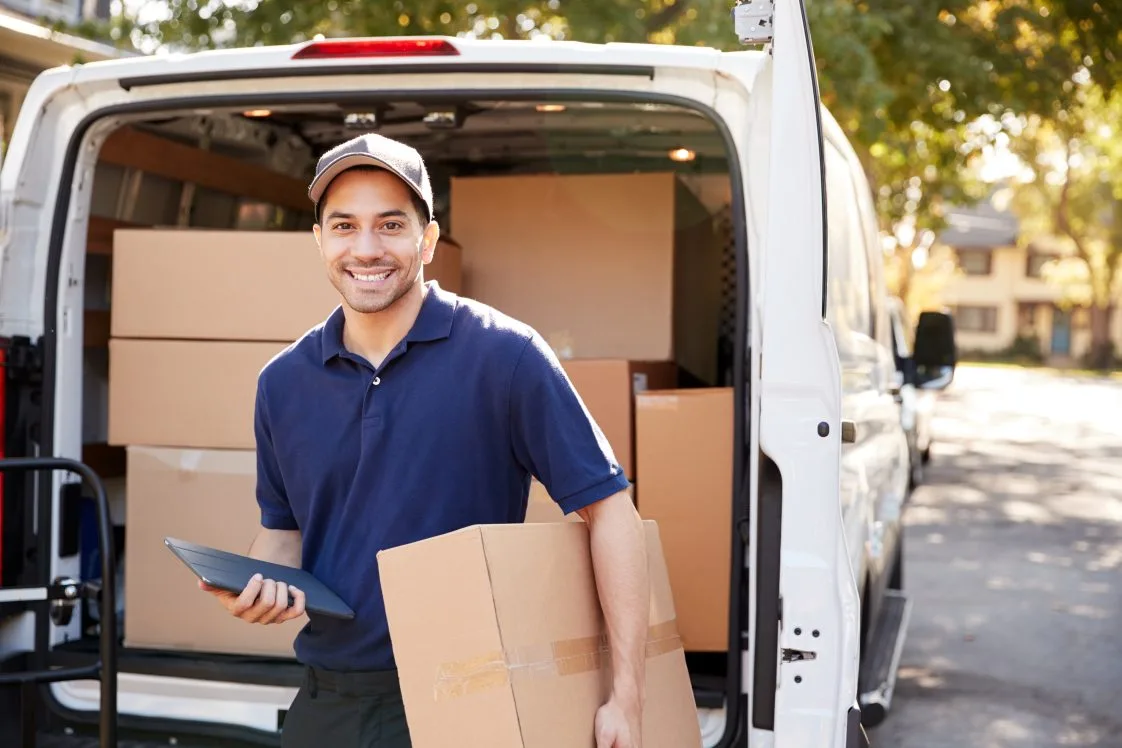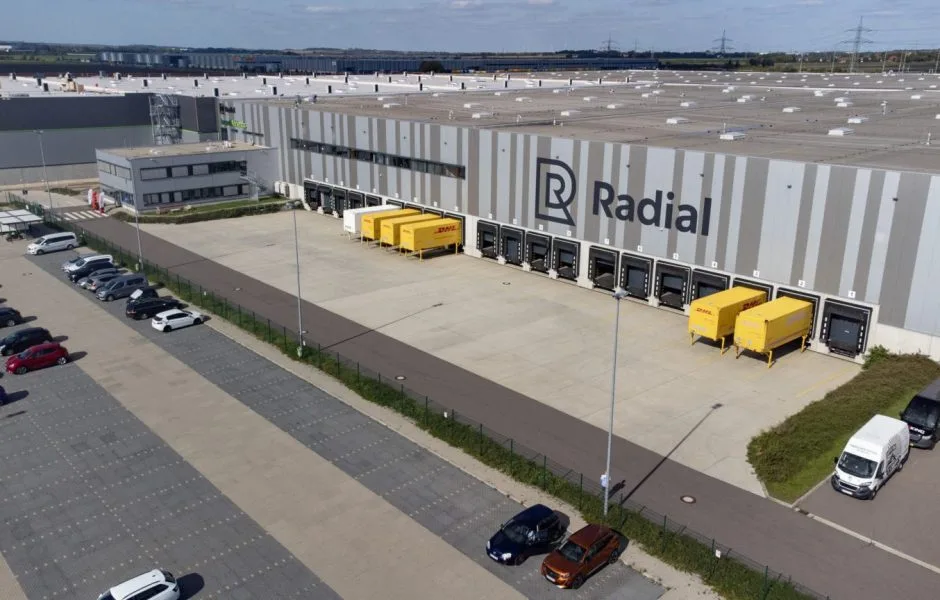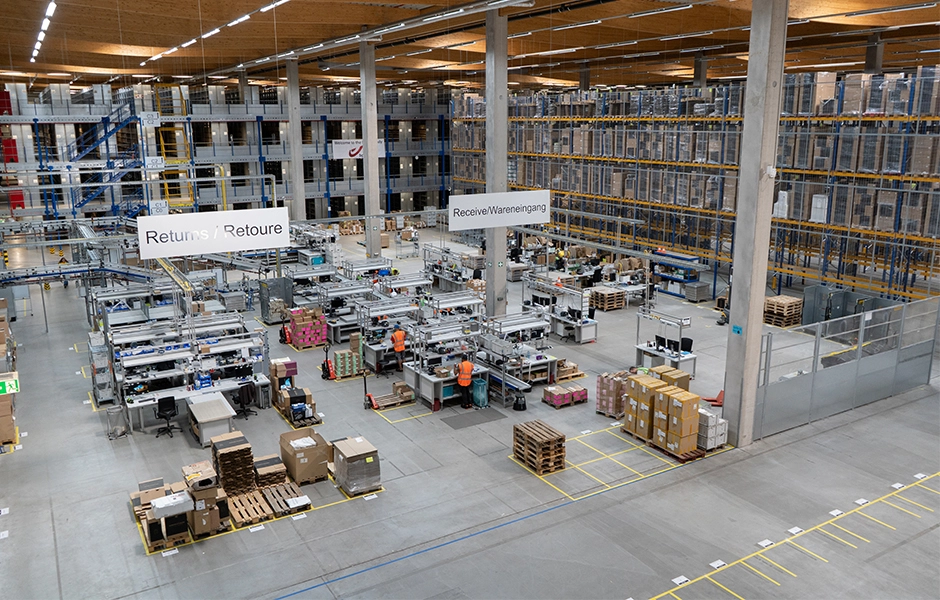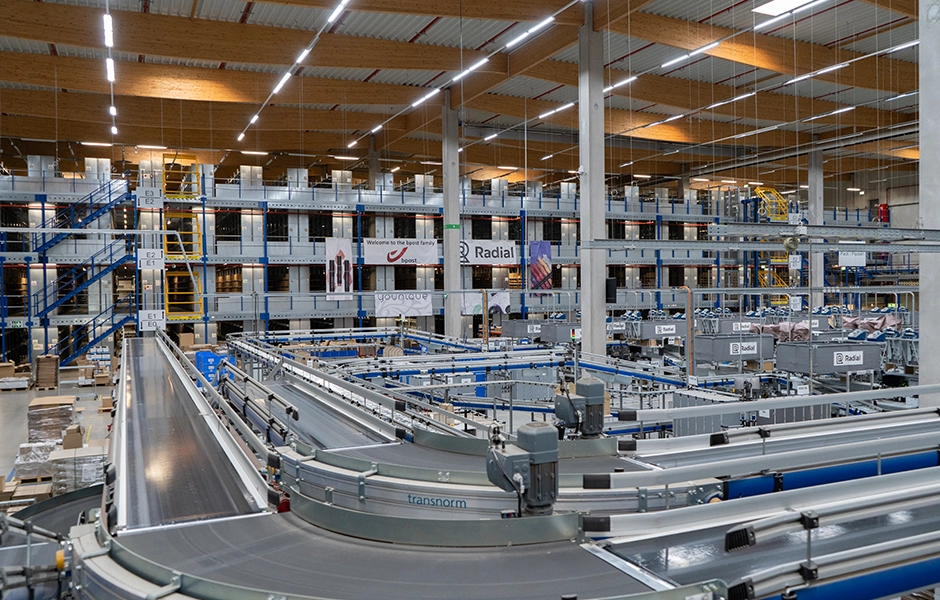Last Mile Delivery Trends and Strategies to Ace E-commerce Fulfillment

Last mile delivery—the stage where a package moves from an e-commerce fulfillment center to carriers like Yodel, Evri, UPS, or DHL for final delivery to the customer—is the most visible part of the fulfillment process. It’s also one of the most costly for online retailers.

Radial Europe, Halle Fulfillment Site, Germany
Since the pandemic, rising parcel volumes—up 6% in the U.S. alone in 2021 to 21.5 billion—have made it harder for retailers to manage costs, challenges, and growing customer expectations. With faster delivery demands, higher shipping costs, and evolving last mile models, the pressure to enhance the final stage of the customer journey is greater than ever.
Why does last mile delivery matter so much to the customer experience?
Customers now expect shipping notifications and accurate delivery dates. When delays or errors occur, they often blame the retailer—not the carrier. Despite limited control over last mile logistics, retailers are still responsible for the overall experience, which is why some, like Amazon, have built their own delivery networks to manage it end-to-end.
Last mile logistics challenges
As e-commerce grows and demand for same- or next-day delivery rises, last mile challenges have intensified. More deliveries mean more vehicles on the road, greater risk of errors, higher costs, and increased environmental impact.
Pandemic-driven options like BOPIS, BOPAC, ship-to-store, and ship-from-store have become standard. Ongoing supply chain issues and inventory sourcing from multiple locations add complexity. Local fulfillment, autonomous delivery, and driver shortages also contribute—leading to common challenges such as:
- More complex routes. Delivery locations vary widely for a delivery route depending on whether it’s an urban or rural location. In rural areas, customers may be spread out over many miles with just a few packages to deliver. In urban areas, traffic congestion and delays may interfere with multiple stops in closer proximity. These lead to inefficiencies and higher costs.
- Delivery errors. Packages get damaged, misdelivered to the wrong address, or stolen by porch pirates. While not the fault of carriers, customers tend to blame them when package theft occurs.
- Undeliverable packages. When customers and businesses are not available to accept signed deliveries, a second delivery attempt must be made, which doubles the cost of the last mile.
- Returns. Reverse logistics doubles the cost of delivery as well, but across the entire order process. Packages that are delivered and then returned must be redelivered to the brick-and-mortar store or e-commerce fulfillment center.

Radial Europe, Halle (Germany) fulfillment site – returns area.
- Environmental factors. Transportation firms, courier companies, and third-party logistics providers are under pressure to reduce pollution, emissions, and traffic congestion—and to generally be proactive when it comes to sustainability. More efficient vehicles, better automation, and improved efficiencies are all part of reducing the impact of these issues.
5 trends and strategies to optimize last mile delivery
Last mile delivery can be one of the most inefficient parts of the entire supply chain, according to 59% of US transportation and logistics companies. Improving efficiency while also boosting customer experience can be challenging, but there are some trends and strategies e-commerce retailers can leverage to help guarantee fast delivery to a customer’s doorstep, improve brand loyalty, and improve resiliency against unexpected disruption.
Here are five strategies to optimize last mile delivery:

- Promote store fulfillment options. The pandemic boosted demand for store fulfillment options. BOPIS and BOPAC cut last-mile delivery costs by letting customers shop online and pick up orders in-store from existing inventory. Ship-to-store allows online orders to be delivered from fulfillment centers for customer pickup.
- Use crowdsourced delivery. Crowdsourced delivery, like Uber’s business model, relies on private individuals using their own vehicles to deliver packages. It’s cost-effective for local, same-day, or two-hour urban deliveries but lacks the infrastructure, technology, training, and security of professional shipping providers
- Improve route planning. Logistics technology solutions use artificial intelligence (AI) that can calculate delivery route options for the highest level of efficiency while providing transparency into the entire e-commerce fulfillment process—including the last mile. These software solutions provide real-time tracking and alerts and offer a comprehensive view of all the factors that impact route optimization.
- Automate delivery notification. Requiring customer confirmation for proof of delivery (POD) verifies deliveries but can impact customer experience, as most prefer not to be present or interrupted. POD also slows delivery. To address this, major carriers use automated notifications to confirm package arrivals, serving as electronically transmitted POD.
- Partner with an order fulfillment partner. Retailers often work with major shippers or third-party logistics providers, while some manage their own fleets. Partnering with a trusted e-commerce fulfillment provider streamlines order management and enhances last-mile delivery efficiency and costs. Many, like Radial, offer transportation management and excel at carrier contract negotiations. This partnership boosts efficiency, cuts costs, speeds up deliveries, and lets retailers focus on their core business and customer experience.
Improving last mile delivery is a continuous process, but e-commerce retailers that focus on optimizing their operations to boost efficiency, decrease costs, innovate delivery models, and partner with industry experts can keep customers happy and loyal even when external challenges surface.
Learn more about Radial’s last mile optimization services to see how you can differentiate your business from your competitors by optimizing the entire e-commerce fulfillment and delivery process.
Contact Us (EUR)
By submitting this form, you agree to our friendly privacy policy.
